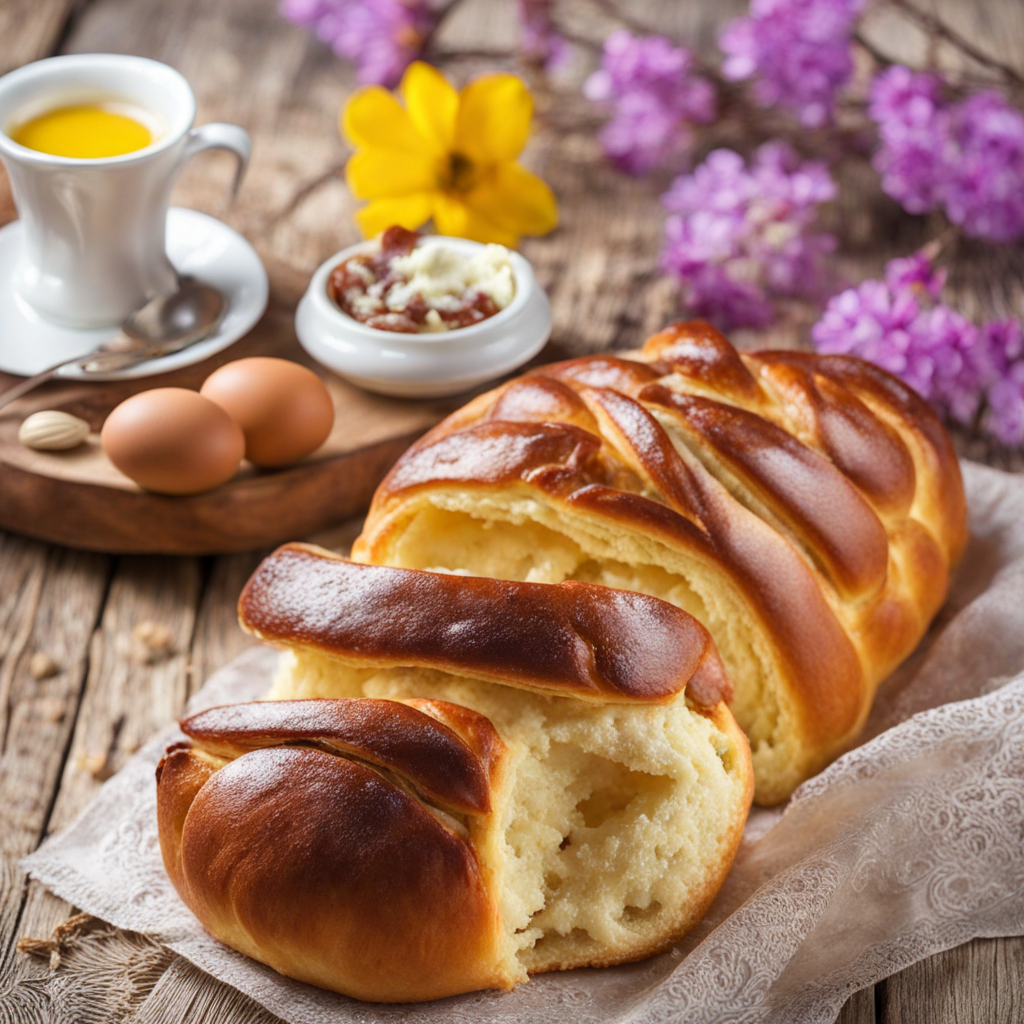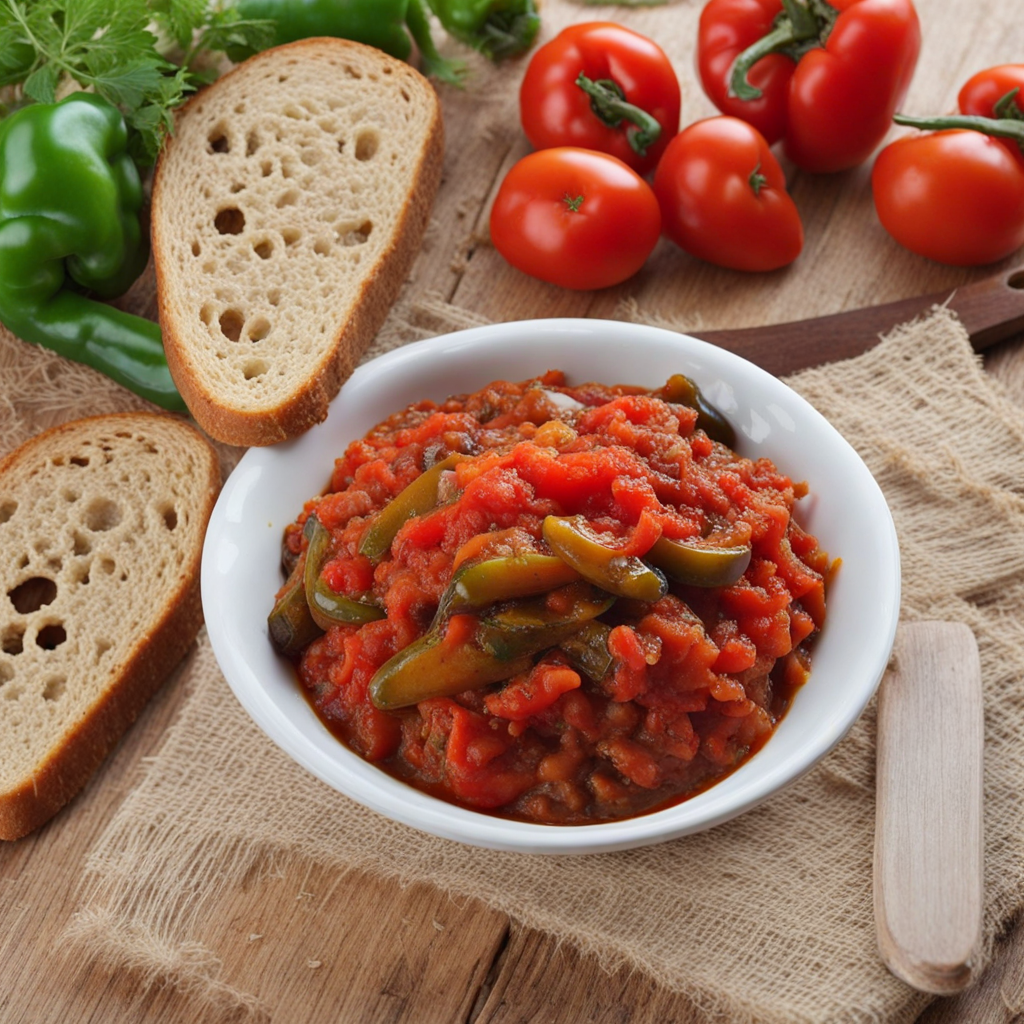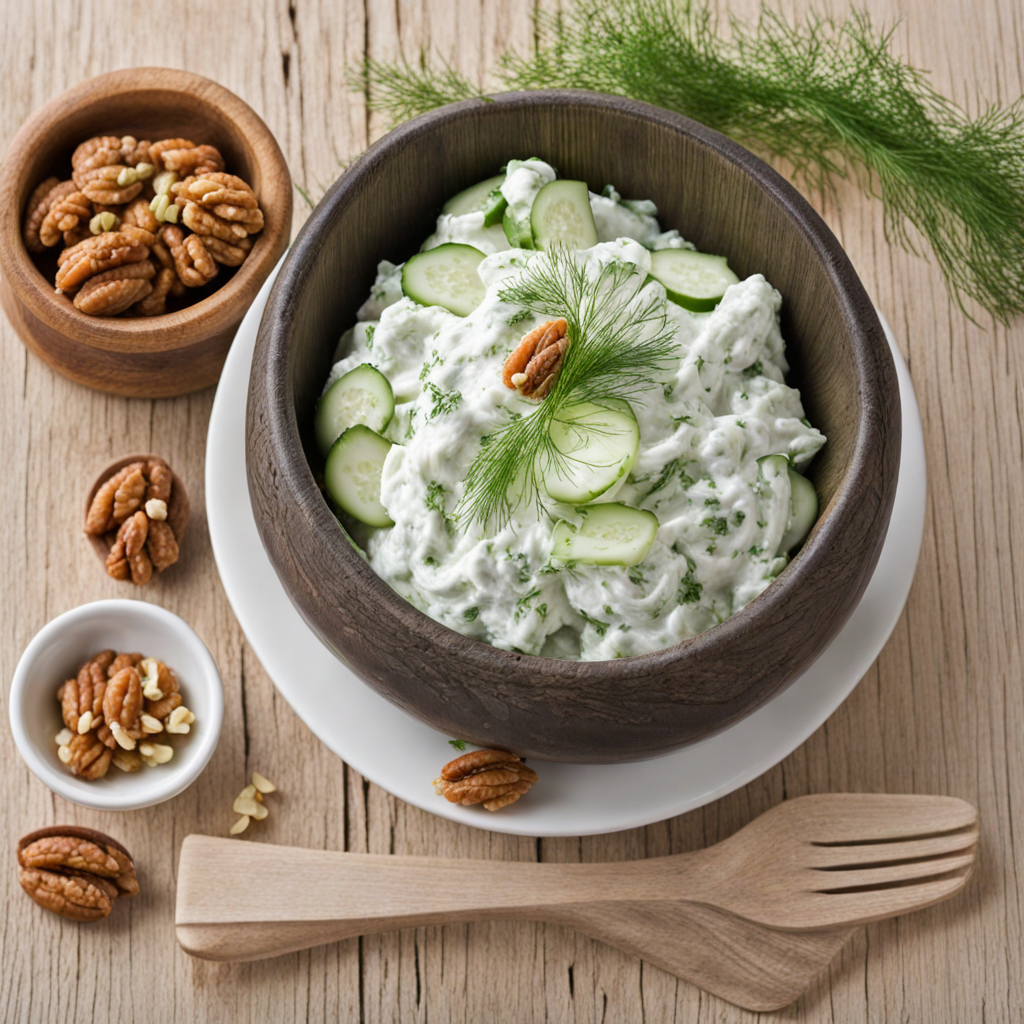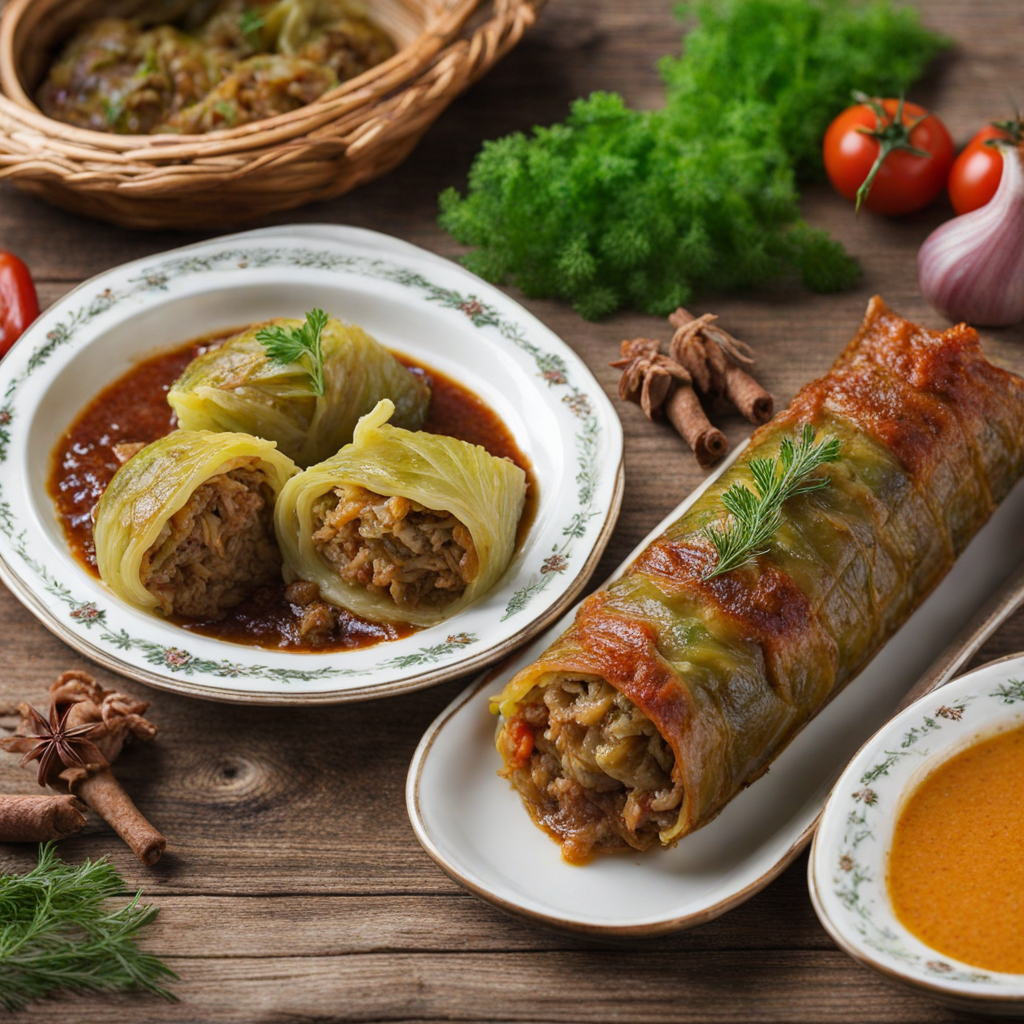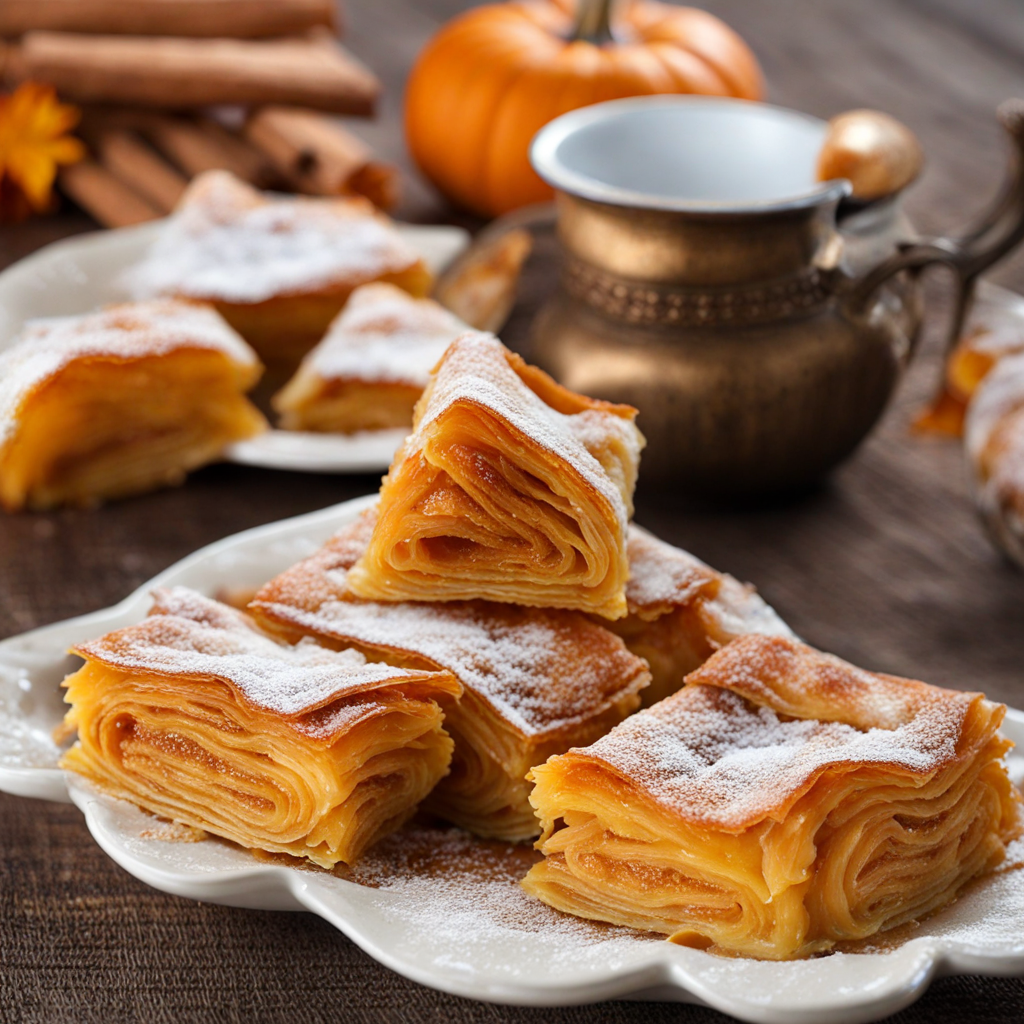Kozunak
Kozunak is a traditional Bulgarian sweet bread that is typically enjoyed during Easter celebrations, though its delightful flavor makes it a beloved treat year-round. This rich, fluffy bread is characterized by its golden-brown crust and soft, airy interior, which is achieved through a labor-intensive process of kneading and rising. Made with simple ingredients like flour, sugar, milk, eggs, and butter, Kozunak is often enhanced with a variety of flavors, including vanilla, lemon zest, or even a hint of orange, making each loaf a unique experience for the palate. One of the most enchanting aspects of Kozunak is its braided shape, which not only adds to its visual appeal but also creates delightful textures in each bite. The dough is skillfully braided before baking, resulting in a beautifully layered structure that captures the lightness of the bread. In many cases, Kozunak is adorned with a sprinkle of sesame seeds or a dusting of powdered sugar, adding a subtle crunch and sweetness that complements the soft, fluffy interior. Some variations also include raisins or nuts, providing an added layer of flavor and a delightful surprise as you enjoy each slice. When enjoyed fresh, Kozunak offers an irresistible aroma and a tender crumb that melts in your mouth. It is often served plain, toasted, or with a spread of butter, making it a versatile accompaniment for breakfast or dessert. The joy of Kozunak lies not only in its taste but also in the shared tradition of baking it, bringing families together during special occasions. Discovering Kozunak is like embarking on a culinary journey that celebrates the rich heritage of Bulgarian cuisine, offering a taste that is both comforting and indulgent.
How It Became This Dish
The History of Козунак: A Sweet Symbol of Bulgarian Tradition Козунак (Kozunak) is a traditional sweet bread that holds a cherished place in Bulgarian culture, particularly during festive occasions. Known for its rich flavor, soft texture, and braided appearance, Kozunak transcends mere sustenance; it is a symbol of celebration, family unity, and cultural identity. To understand the significance of Kozunak, we must delve into its origins, cultural implications, and the evolution it has undergone through the ages. #### Origins and Etymology The roots of Kozunak can be traced back to ancient civilizations that populated the Balkan Peninsula. Its etymology is believed to originate from the Bulgarian word "коза" (koza), meaning "goat," which aligns with the tradition of associating certain foods with pastoral life and fertility. While exact historical records are scant, it is widely accepted that Kozunak emerged from the broader category of Eastern European sweet breads, which can be linked to the Byzantine Empire and its culinary practices. The Greeks had their own version of sweet bread, often flavored with spices, nuts, and dried fruits. The Ottoman influence also played a role; as the empire expanded into the Balkans, it brought with it culinary techniques and tastes that blended with local traditions. The evolution of Kozunak can thus be viewed as a confluence of various cultural elements, culminating in a distinctly Bulgarian dish. #### Ingredients and Preparation Traditionally, Kozunak is made from simple yet rich ingredients: flour, sugar, milk, eggs, butter, and yeast. These components create a dough that is soft and pliable, allowing the baker to shape and braid it beautifully. The addition of flavors such as lemon zest, vanilla, and often a sprinkle of sesame or poppy seeds on top enhances its aroma and taste. The preparation of Kozunak is a labor-intensive process, often requiring several hours of kneading and rising. Families typically gather to make Kozunak during significant celebrations, such as Easter and Christmas, turning the act of baking into a communal event. This collaborative spirit emphasizes the bread's role as a symbol of togetherness and love. #### Cultural Significance In Bulgaria, Kozunak is more than just a food item; it embodies the very essence of community and tradition. Its most prominent association is with Easter, where it takes center stage on tables across the country. Known as "възкресенски козунак" (Vazkresenski Kozunak), it is baked to celebrate the resurrection of Christ. The bread is often blessed during the Easter service and shared among family and friends, signifying the joy of the holiday and the triumph of life over death. The braided shape of Kozunak is also significant. It is often interpreted as a representation of the Holy Trinity; the three strands symbolize the Father, Son, and Holy Spirit. This religious connotation adds depth to the bread's cultural importance, making it a central part of Bulgarian spiritual life. Beyond Easter, Kozunak is present during Christmas and weddings, where it signifies prosperity and good fortune. Each occasion has its unique variations and rituals associated with the bread. For example, during weddings, it is common to place a coin inside the Kozunak, and the person who finds it is believed to be blessed with good luck in the coming year. #### Development Over Time Over the centuries, the recipe and preparation of Kozunak have continued to evolve. In the past, each region in Bulgaria had its distinct approach to making the bread, influenced by local ingredients and customs. Some areas would incorporate nuts and dried fruits, while others might experiment with different spices. This regional diversity has led to a rich tapestry of Kozunak variations, with each family likely holding its unique recipe passed down through generations. The 20th century brought significant changes to Bulgarian society, including industrialization and urbanization. As more people moved to cities, traditional practices began to wane, and many families found it challenging to maintain the time-consuming rituals of baking Kozunak. Commercial bakeries began to produce their versions of the bread, making it more accessible but often at the expense of traditional methods and flavors. In response to these changes, there has been a resurgence of interest in artisanal baking in recent years. Many Bulgarians have turned back to traditional recipes, seeking to reconnect with their cultural heritage. This revival has been aided by a growing appreciation for homemade and locally sourced foods, leading to a renaissance of Kozunak in its traditional form. #### Kozunak Today Today, Kozunak remains a beloved staple of Bulgarian cuisine. It is not only enjoyed during holidays but has also found its way into everyday life. Bakeries across Bulgaria offer freshly baked Kozunak, and some even experiment with modern twists, introducing chocolate, fruit fillings, and other innovative flavors. In contemporary Bulgaria, Kozunak serves as a bridge between the past and the present. It continues to be a centerpiece at family gatherings, celebrations, and religious observances, reinforcing its status as a symbol of unity and tradition. The act of baking Kozunak has become a means of preserving cultural identity in a rapidly changing world, allowing families to pass down their culinary heritage to future generations. #### Conclusion The history of Kozunak is a testament to the resilience of Bulgarian culture and the power of food as a vehicle for tradition. From its ancient roots to its modern interpretations, Kozunak encapsulates the spirit of community, celebration, and continuity. It is more than just a sweet bread; it is a symbol of love, faith, and the enduring connection to one’s heritage. As Bulgaria continues to navigate the complexities of modern life, Kozunak remains a sweet reminder of the importance of family, tradition, and the joy of sharing a meal together.
You may like
Discover local flavors from Bulgaria


